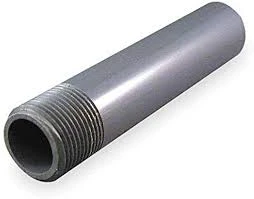-
Cangzhou Yulong Steel Co., Ltd.
-
Phone:
+86 13303177267 -
Email:
admin@ylsteelfittings.com
- English
- Arabic
- Italian
- Spanish
- Portuguese
- German
- kazakh
- Persian
- Greek
- French
- Russian
- Polish
- Thai
- Indonesian
- Vietnamese
- Zulu
- Korean
- Uzbek
- Hindi
- Serbian
- Malay
- Ukrainian
- Gujarati
- Haitian Creole
- hausa
- hawaiian
- Hebrew
- Miao
- Hungarian
- Icelandic
- igbo
- irish
- Japanese
- Javanese
- Kannada
- Khmer
- Rwandese
- Afrikaans
- Albanian
- Amharic
- Armenian
- Azerbaijani
- Basque
- Belarusian
- Bengali
- Bosnian
- Bulgarian
- Catalan
- Cebuano
- China
- China (Taiwan)
- Corsican
- Croatian
- Czech
- Danish
- Esperanto
- Estonian
- Finnish
- Frisian
- Galician
- Georgian
- Kurdish
- Kyrgyz
- Lao
- Latin
- Latvian
- Lithuanian
- Luxembourgish
- Macedonian
- Malgashi
- Malayalam
- Maltese
- Maori
- Marathi
- Mongolian
- Myanmar
- Nepali
- Norwegian
- Norwegian
- Occitan
- Pashto
- Dutch
- Punjabi
- Romanian
- Samoan
- Scottish Gaelic
- Sesotho
- Shona
- Sindhi
- Sinhala
- Slovak
- Slovenian
- Somali
- Sundanese
- Swahili
- Swedish
- Tagalog
- Tajik
- Tamil
- Tatar
- Telugu
- Turkish
- Turkmen
- Urdu
- Uighur
- Welsh
- Bantu
- Yiddish
- Yoruba

Oct . 31, 2024 04:24 Back to list
steel blind flange
Understanding Steel Blind Flanges
Steel blind flanges are an essential component in various piping applications, providing a reliable sealing solution for the ends of pipes or vessels. Unlike other types of flanges that are designed to connect two sections of a pipe or attach a valve, blind flanges are solid discs with no center hole, effectively blinding off the pipeline.
Composition and Types
Blind flanges can be made from various materials, but steel is one of the most popular choices due to its strength, durability, and resistance to high pressures and temperatures. Various grades of steel, including carbon steel, stainless steel, and alloy steel, are used depending on the application requirements. Each material offers unique properties suited for specific environments, such as corrosive conditions where stainless steel would be preferable.
Steel blind flanges come in different standards, such as ASME, ANSI, and DIN, catering to various industrial requirements. Their sizes can range from small diameters to large ones, accommodating a variety of pipe system specifications.
Applications
steel blind flange

The primary use of blind flanges is to seal the ends of pipes, providing a closure without the need for a valve or connection. They are commonly found in piping systems of oil and gas industries, chemical plants, power generation facilities, and water treatment facilities. Beyond blocking off a pipe, blind flanges also facilitate maintenance, allowing sections of the piping system to be isolated for repairs or inspections without draining the entire system.
In addition to isolation, blind flanges can also be used for pressure testing systems. By sealing off the end of a pipe, engineers can apply pressure to ensure the integrity of the system before it is put into operation, ensuring that leaks or weaknesses are addressed in advance.
Installation and Considerations
When installing steel blind flanges, several factors must be considered to ensure a proper fit and seal. The flange surface must be clean and free of debris, and the appropriate gaskets should be used to prevent leaks. The bolts used to secure the blind flange need to be torqued evenly to provide consistent pressure across the sealing surface.
Choosing the right blind flange involves considering the pressure and temperature ratings required for the specific application, as well as the compatibility of the materials involved. Ensuring these factors are taken into account will result in a secure and efficient piping system.
In conclusion, steel blind flanges are a vital component in many industries, providing necessary closures and maintaining the efficiency of piping systems. Their ability to seal off pipes, combined with their robust materials, makes them indispensable in modern engineering applications.
Latest news
-
ANSI 150P SS304 SO FLANGE
NewsFeb.14,2025
-
ASTM A333GR6 STEEL PIPE
NewsJan.20,2025
-
ANSI B16.5 WELDING NECK FLANGE
NewsJan.15,2026
-
ANSI B16.5 SLIP-ON FLANGE
NewsApr.19,2024
-
SABS 1123 FLANGE
NewsJan.15,2025
-
DIN86044 PLATE FLANGE
NewsApr.19,2024
-
DIN2527 BLIND FLANGE
NewsApr.12,2024
-
JIS B2311 Butt-Welding Fittings LR/SR 45°/90° /180°Seamless/Weld
NewsApr.23,2024











